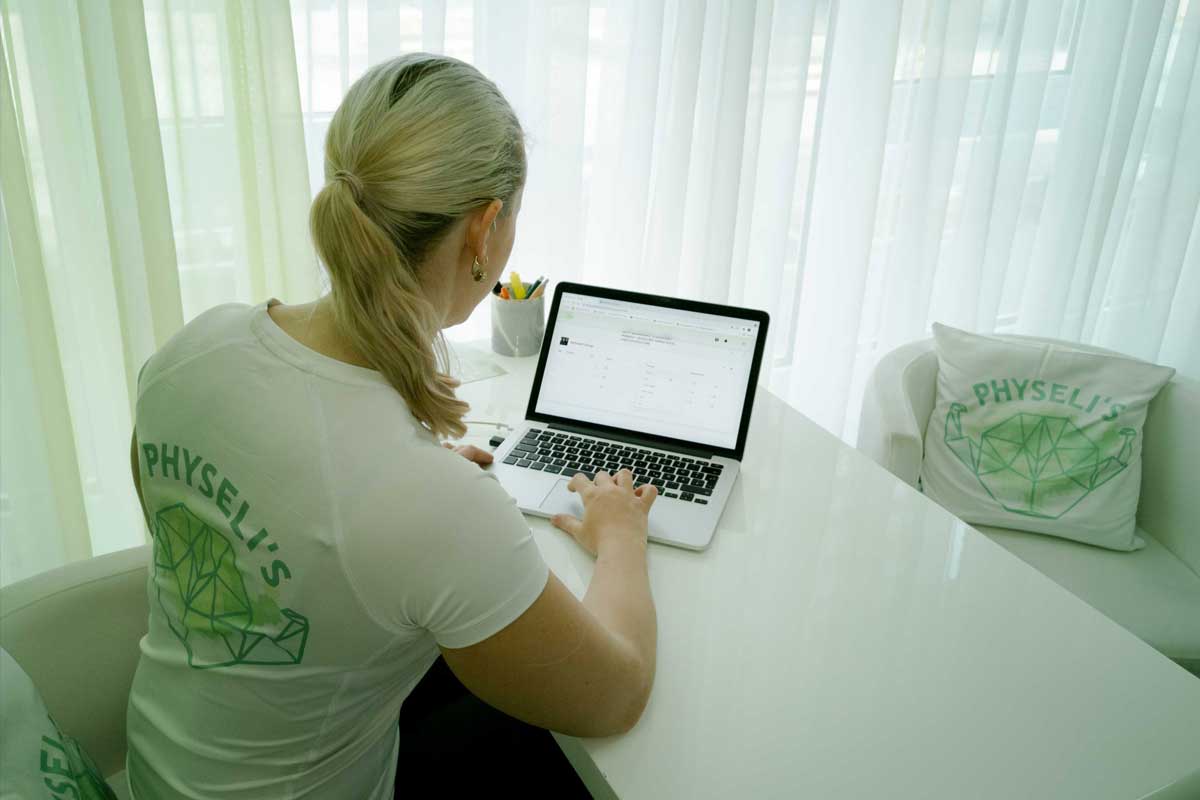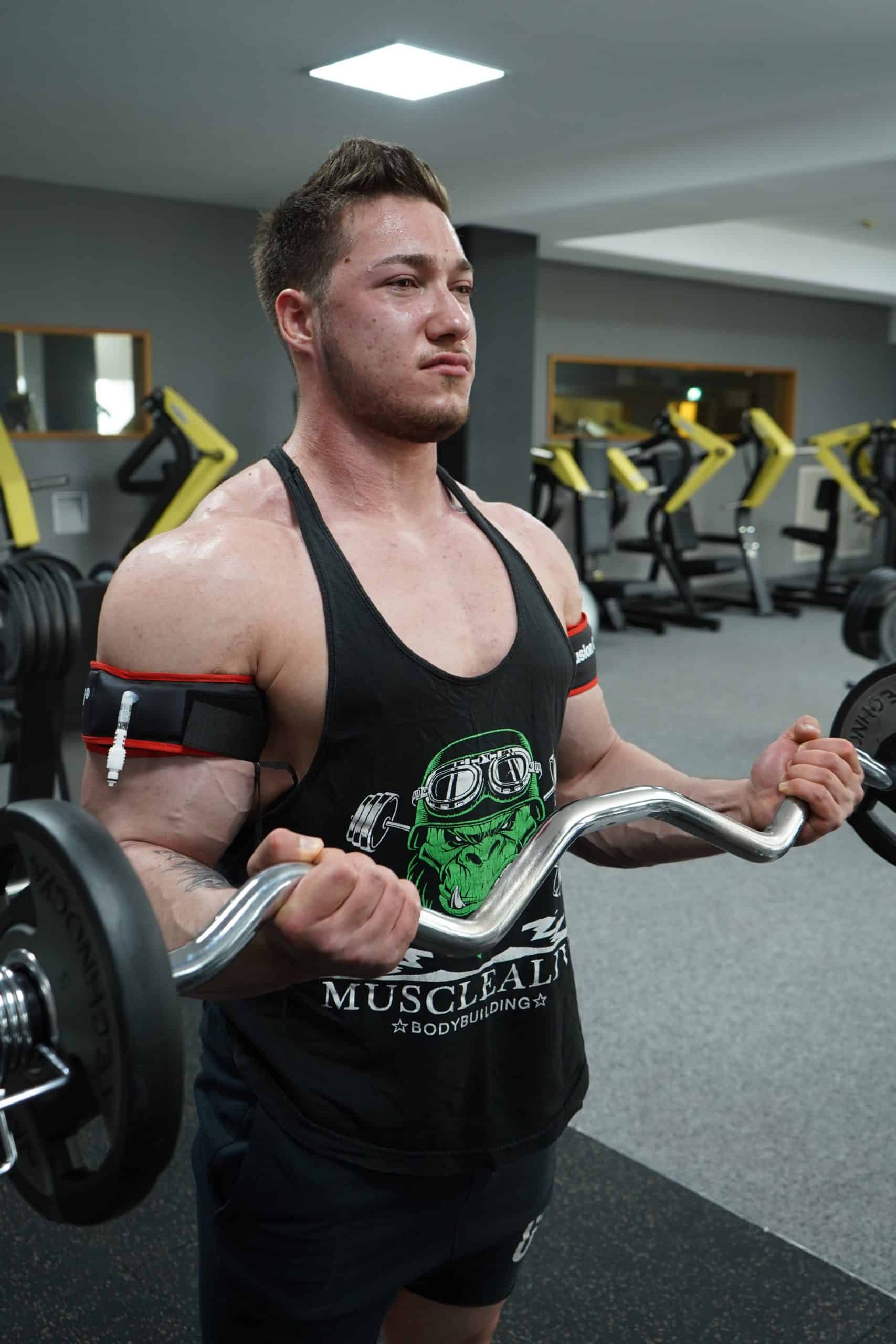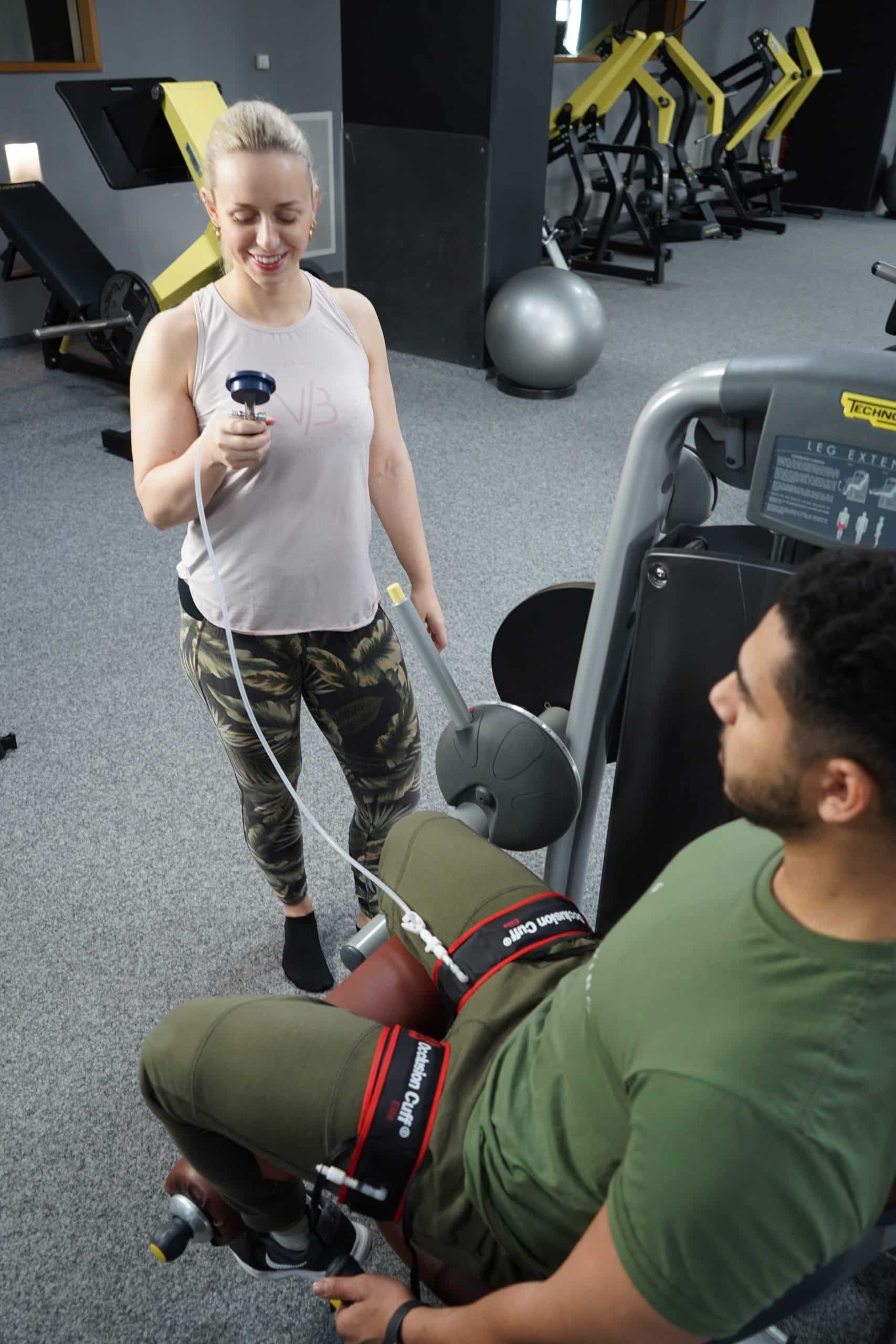
Extras
Blood Flow Restriction Training (BFR)
You are right here!
if you want to train effectively despite an injury
if you have a packed training routine as an athlete and want to integrate additional sessions without high regenerative costs
if you love the burning sensation in the muscles and want to overcome new limits
in the context of
Therapists


Why Blood Flow Restriction Training?
The venous return is limited with special cuffs. This provides the advantage that you can set an effective training stimulus even with very low weights, with which you can build up muscles similarly well as with heavy weight training. Therefore, BFR training is ideal for building up muscles during or after an injury and protecting the joints and passive structures. That is why it is also popular with high-performance athletes who want to pay attention to their regeneration.
How can I integrate BFR into my training or rehab?
In addition to supervised sessions with us on site, we also offer you the possibility to borrow the appropriate equipment from us after an on-site training.
What goals can I achieve with BFR in training / rehab?
Blood flow restriction training can help in rehab to train hard and maintain or even build important muscle despite injuries. Since very little weight is necessary due to the special method, this training is particularly gentle on joints and passive structures and can therefore also be carried out in the event of corresponding complaints.
Jump Analysis
You are right here!
if you want to take a closer look at your jumping performance
if you play a sport in which jumping is relevant for performance (e.g. basketball)
if you want to get more out of your athletic potential
if you want to analyze your strengths and weaknesses more closely and adjust your training accordingly
if you want to monitor your progress
in the context of
Therapists
Why should I do a jump analysis?
By analyzing different types of jumping with the help of contact mats (or force plates), conclusions can be drawn about different strength abilities as well as strengths and weaknesses in the execution of movements and the training can be adapted.
This is especially useful if jumping or running are part of your sport.
Training plan – creation
in the context of
Therapists
In physiotherapy , of course, you will always receive exercises for at home (via app with videos or in writing).
If you want a workout plan (in addition to or following or personal training) to train on your own, you get access to a free app that even has videos on many exercises. After we have discussed or worked through the plan together, you can train with it on your own.
If you have any questions or feedback about the training plan, you can always contact us and we can make adjustments if necessary.
Even if you just want a training plan to train on your own and don’t need personal training, we need at least 2 sessions together first to plan everything.